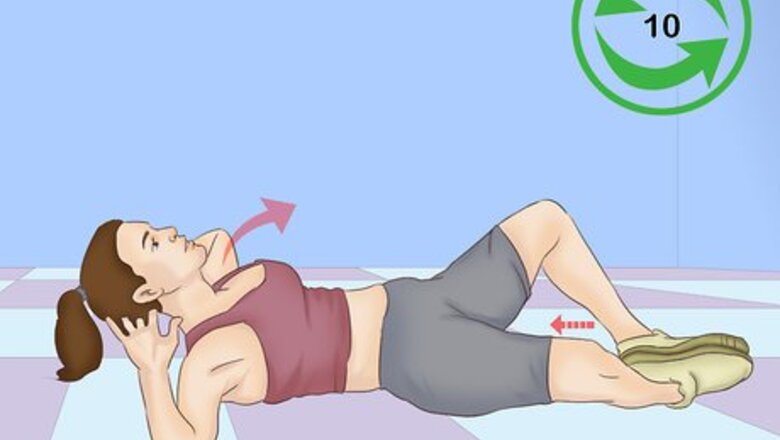
views
Targeting Your Abs
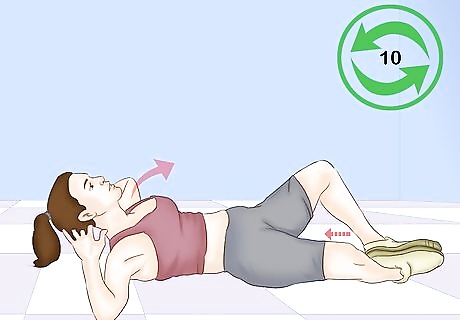
Start with butterfly crunches. This is a simple yet effective move that targets the rectus abdominis—the 6-pack area—and is great for beginners. Lie on your back with the soles of your feet together as close to your body as possible, with knees bent out to sides. Place your hands beside your ears to keep yourself from yanking on your neck. Keeping your back flat on the floor and stomach muscles contracted, exhale and curl your chest up a few inches off the floor toward your legs. Lower to start position. Repeat 10 times.
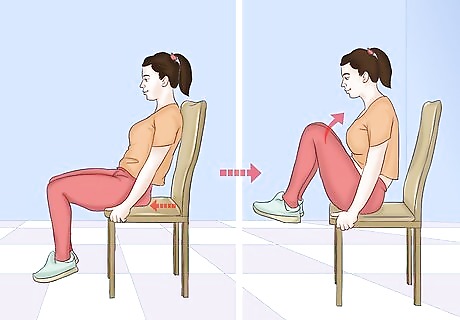
Work towards a 6 pack with the abdominal hold. This move can look a little wonky but it really targets your rectus abdominis. Sit tall on the edge of a sturdy chair and place your hands on the edge with your fingers pointing towards your knees. Lift your knees in towards your chest to work your abs, tightening your core muscles. Hold this position as long as you can, aiming for 5 to 10 seconds. Lower yourself down and repeat 10 times.
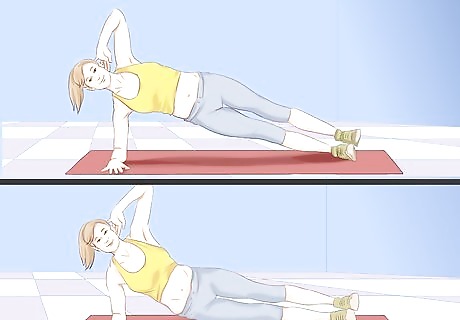
Challenge yourself with a side crunch. Side crunches look a lot easier than they are. They test your balance and work your oblique muscles. Kneel on the floor and lean all the way over to your right side, placing your right palm on the floor. Contract your abdominal muscles as you straighten your torso to create a straight diagonal line from your right knee to your right shoulder. Hold that position on your right side, keeping your right hip from dropping down towards the floor. Keeping your weight balanced, slowly extend your left leg and point your toes. Place your left hand behind your head, pointing your elbow toward the ceiling. Next, slowly lift your left leg. Lower to your starting position. Repeat doing two sets of 10-15 reps, then switch sides.
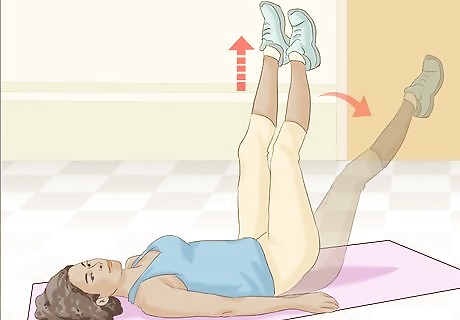
Try scissors. Scissors will quickly get your abs burning with just one move. Lie on your back with your hands at your sides or underneath your glutes for more back support. Keeping your abdominals tight, lift your stretched out legs as high as you can so that the bottoms of your feet are facing the ceiling. Next, lower one leg slowly towards the floor before hovering it just above the ground. Then, bring both legs together again in the original raised position. Lower the other leg towards the floor before raising both your legs back up. Repeat this alternating leg motion 10-15 times for each leg. For a variation on this motion, raise your legs one higher than the other while they remain parallel yet lifted off the floor. The closer your heels are to the floor for this exercise, the harder it will be. This exercise taxes the hip flexors. If you find your back hurts, lower your legs less and follow the exercise with a hip flexor stretch, such as a standing front thigh stretch. Do up to 2 sets.
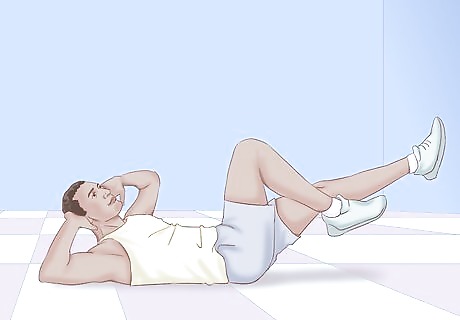
Do the bicycle exercise. Bicycles will engage your obliques for a great workout in no time. Lie on your back with your fingers cupped at either ear. Lift your feet off the floor, keeping your shins parallel with the floor. You will maintain this raised position throughout the exercise. Keeping your abdominals tight, raise your left knee and raise it to towards right shoulder. Return to start, then raise your right knee and reach it to your left shoulder. Alternate for 15 reps in a smooth, continuous motion, keeping abs engaged and hands relaxed so you don't pull on your neck. Work up to 2 sets.
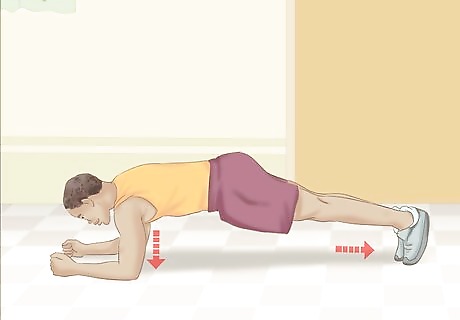
Hold a front plank. Similar to the side crunch, the front plank looks deceptively easy. This move targets your transverse abdominals and will have your muscles shaking in seconds. Start on your hands and knees. Keeping your back and ab muscles contracted, drop down to your forearms while extending legs out behind you so you are resting on the balls of your feet. Be sure to keep your back straight, hips up, and neck relaxed. Start with a 10-second hold, working up to a 60-second hold as you become stronger. Repeat 2-3 times.
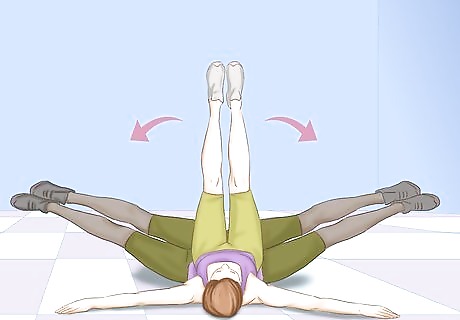
Perform the windshield-wiper exercise. Windshield wipers are a simple move with a big pay off for your obliques. Lie on your back with your arms out to the sides, legs and feet pointing up. Exhale and draw your navel in towards your spine as you lower your legs to the left side in a controlled motion about 5 inches from the floor. Lift back to the center with a controlled motion. Return to start and repeat on the right side. Keep switching sides for a total of 15 reps. Work up to 3 sets. Avoid arching your lower back as you move from side to side.
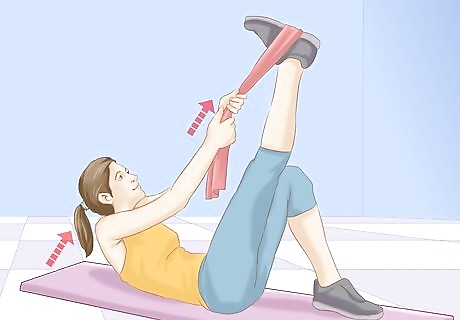
Climb up. This climb up move is a twist on the classic lying-down crunch that targets the rectus abdominis or 6-pack muscles. Start by lying on the floor with a 3-foot-long scarf or towel wrapped around the ball of your right foot, knees bent, left foot on the floor. Hold the scarf in both hands, and extend your right leg, keeping your foot flexed. Slowly walk your hands up the scarf, flexing your abdominal muscles, as you lift your head and shoulders off the floor. Hold for a count of 2. Now lower yourself back to the starting position, walking your hands back down the scarf. Do two sets of 8 to 10 reps on each sides. Remember to keep your head neutral. Don’t tuck your chin or tilt it back.
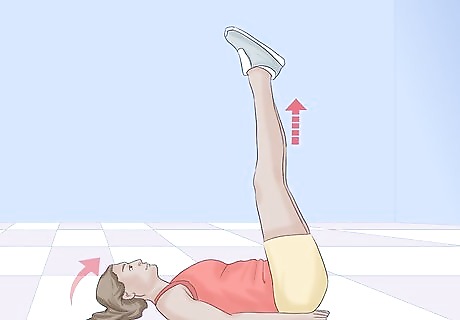
Ramp up your climb-up exercise. Fingers to toes works your rectus abdominus without even moving that much. Lie on your back with your legs straight and pointed toward the ceiling, with arms down by your side. Exhale and contract your abs as you tighten your core, lifting your head and shoulders off the floor. Keep your back flat on the floor. Work up to 2 sets of 15 reps.
Starting a Routine

Find the best way to workout for you. There are so many exercising options today including group classes, videos and books you can purchase, free tutorials online, magazines, apps, the list goes on and on. Find the best option that works for you and your needs. This process could take a little trial and error. You could go to a group exercise class thinking you’ll love the environment and discover you prefer to work out alone. It’s okay to try new things and change up your routine multiple times before finding the ones that work best for you.
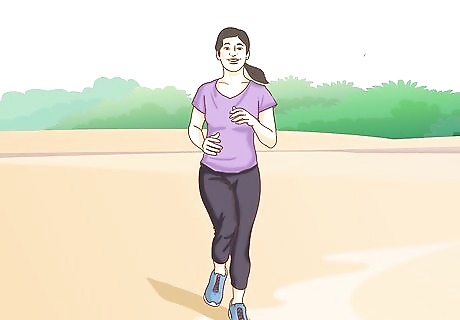
Crank up the cardio. Everything you do that gets your heart pumping, like jogging, biking, or dancing, burns calories. But when it comes to working off belly fat, not all cardio is created equal. There are moves you can do for a killer cardio routine that burn even more calories while engaging your deepest core muscles. High knees is a simple and effective cardio move. Stand to the left of a ring or square on the floor (or just imagine one drawn on the ground). Drawing your knees up to your chest with each step, step your right foot inside the ring, then your left. Step your right foot out, then left. Repeat in the opposite direction as fast as possible for 30 seconds, remembering to engage your lower abs. Many people may think jumping rope is juvenile, but it’s actually a great form of exercise. Jump rope for 15 minutes, doing basic jumps for five minutes, one minute on the left and right foot, three minutes alternating legs, and ending with five more minutes of basic jumps. Keep your breathing steady and engage your core the entire time.
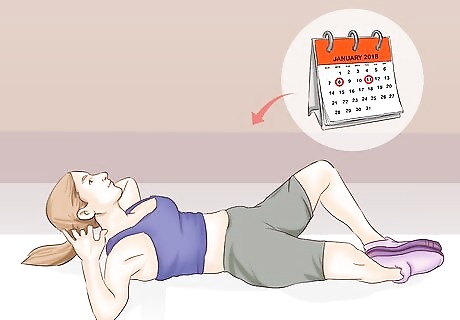
Work your abs 2-3 times a week. Keep your abs in tip-top shape by exercising them at least twice a week using your favorite exercises from this list. If you find you have additional time to exercise, try cardio, yoga, dancing, or other resistance training to keep your core strong. Butterfly crunches. 1 set of 10 reps. Side to sides. 1 set of 15 reps. Front plank. Hold for 10-60 seconds. Repeat 2-3 times. Fingers to toes. 2 sets of 15 reps. Scissors or bicycles. 2 sets of 15 reps. Windshield wipers. 3 sets of 15 reps.
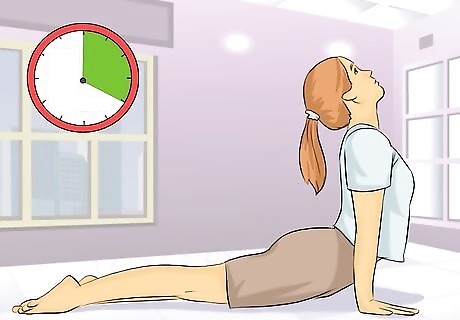
Exercise regularly. The key to getting in shape is to exercise regularly. One workout every two weeks isn’t going to get you the results you’re looking for. Perform three to four aerobic workouts per week, starting at 20 to 30 minutes per session. As you become stronger, you can build on that time. If 20 minutes feels too long, start with 10. You want to challenge your body without putting yourself in danger. Whatever level you’re at, be proud that you’re there and remember you’ll improve quickly if you keep at your routine.
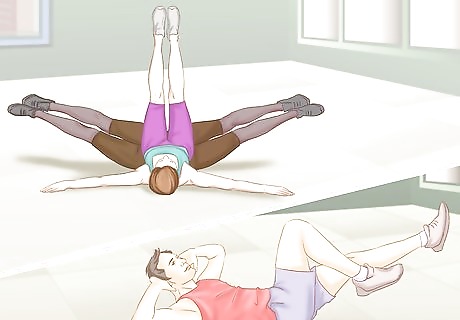
Target all abdominal muscles. Your core is made of different parts including your obliques, transversus abdominis, and rectus abdominis. They’re different muscles with fibers running in different directions. Therefore, it’s crucial to train them in more than just one angle. When you’re exercising, make sure to include different moves for different parts of your core. Bicycles and windshield wipers target obliques while planking targets the transverse abdominal muscle. So doing both of these moves in a workout will target more than just one area of your abs, which means better results.
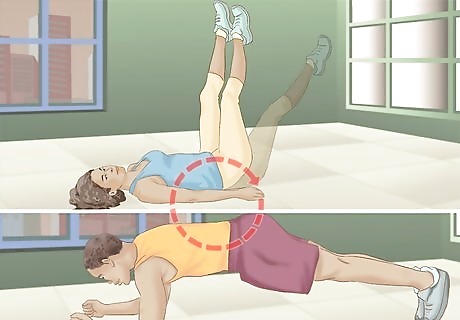
Slowly build on your routine. As you become stronger, both physically and cardiovascularly, your routines will begin to feel easier. As you become stronger, build on your routine so it remains challenging. If your routine becomes too easy, you’ll no longer be challenging your heart or muscles so you’ll stop seeing results. You can build on your routine multiple ways. Crunches should always be done n moderation though. Vary your ab routine to get the most complete workout. You can also challenge yourself with time. If you have been working out for 30 minutes for a few weeks and you’re feeling stronger, try pushing yourself to work out for 45 minutes. Remember that you always want to challenge yourself, but also know your limits. You don’t want to end up injured because you pushed your body too far. EXPERT TIP Eric Christensen, DPT Eric Christensen, DPT Physical Therapist Eric Christensen is a Physical Therapist based in Chandler, Arizona. With over a decade of experience, Eric works in both orthopedic and neurological fields and specializes in custom orthotic prescription and casting, vestibular reprogramming, and manual therapy. He holds a Bachelor’s degree in Exercise Science with a focus in Sports Medicine from Colorado State University and a Doctor of Physical Therapy from Regis University. In practice, Eric takes a developmental approach to rehabilitation utilizing the Selective Functional Movement Assessment. He uses functional movement patterning and manual therapy to return patients to prior levels of function. Eric Christensen, DPT Eric Christensen, DPT Physical Therapist Boost healthy circulation after workouts. After an intense workout, use foam rolling, massage, light cycling, or compression boots to boost healthy circulation through your tight muscle tissue. Stimulating the muscle helps bring about faster recovery.
Getting the Most Out of Your Workout

Consider your needs or limitations. Before you start planning your workout, consider anything that might affect it such as time or environment. If you’re an extremely busy person, you may only have twenty minutes a day to workout so 60 minute group ab class won’t fit into your schedule. If you feel more motivated when you’re working out among other people, you may want to consider a gym membership. It’s completely acceptable to have some needs and limitations when planning workouts. Most people do. But don’t let one limitation be an excuse to not start an ab workout. It’s easy to say “I only have 15 minutes a day to work out so what’s the point?” But 15 minutes is all you need in some cases!

Pay attention to your diet. In order to lose fat, you have to burn more calories than you take in, but that doesn’t mean you can burn them all with exercise. Exercise by itself isn’t very effective for weight loss so you have to pay attention to both what you’re eating and how much too. Eating lean protein promotes muscle gain and can help curb your appetite, which is important for developing great abs. It also keeps you full, which prevents unnecessary snacking. Some great sources of protein include lean meats, fish, poultry, green peas, quinoa, nuts, beans, eggs, tofu, and chia seeds. Cut down on carbohydrates. The average American meal is too high in sugar and fast-burning starches to bring body fat down to visible abs. Opt for foods on the low end of the glycemic index that burn more slowly and don’t spike blood sugar like, oats, broccoli, peaches, kale, quinoa, yogurt, beans, peanuts, and oranges.
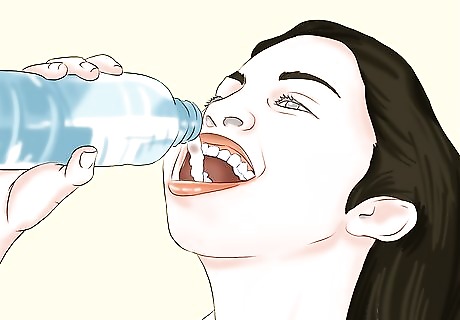
Drink plenty of fluids. Hydration is absolutely key when you’re on a fitness plan, especially one targeted towards your abs. It helps keep your stomach full so you don’t overeat and it flushes out excess sodium to prevent belly bloating. Plain old water is the very best thing you can drink and the old rule of 8 glasses a day is a good start. Drink more water if it’s hot out or if you feel your body needs it. Try to avoid putting flavor packets in your water. While it may taste good, it’s loaded with extra unnecessary sugar. If you need a break from water, try decaf, non-sweetened iced tea or some flavored waters, as certain brands have zero calories and zero grams of sugar.

Consult a physician if necessary. Regular exercise is wonderful for controlling your weight, strengthening bones and muscles, and just feeling better about yourself. But if it’s been awhile since you’ve exercised and you have health concerns, it’s a good idea to talk to your doctor before starting your new ab workout. Moderate physical activity such as brisk walking is generally safe for most people. Health experts suggest that you talk to your doctor before starting a more intense exercise program if you have heart disease, asthma or lung disease, type 1 or type 2 diabetes, kidney disease, arthritis, or if you’re being treated for cancer or have recently completed cancer treatment. The American College of medicine also recommends speaking with your doctor if two or more of the following apply: you’re older than 35 years, you have a family history of heart disease before the age of 60, you smoke or quit smoking in the past six months, you don’t normally exercise for at least 30 minutes most days of the week, you’re significantly overweight, you have high blood pressure or high cholesterol, or you have type 1 or type 2 diabetes.
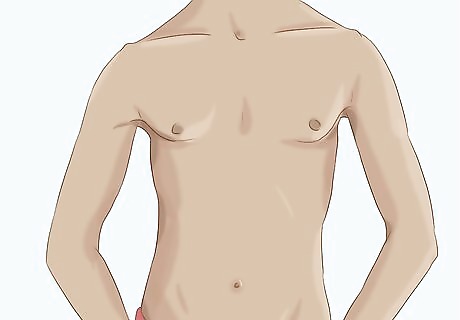
Remember genetics matter. Some people, like those trying to sell a product or idea in a bodybuilding magazine, will tell you that anybody can build a superhero physique as long as they’re motivated. While it’s true that anybody can lose weight and become bigger and stronger, there are limitations. Those limitations are genetics. Consider bone structure. If you have a small, frail bone structure, you may never be as imposing as Bob Paris, but you can still gain strength. While genetics play a role in your body’s ability to build muscle, don’t let it discourage you because you never know just how strong you can get until you try.
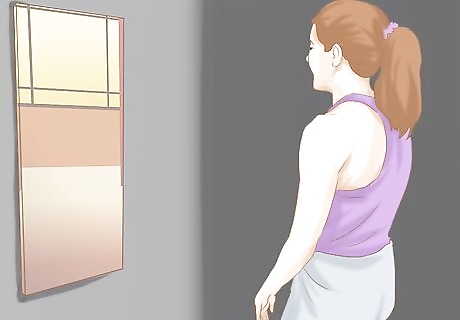
Remind yourself results don’t happen overnight. It can be discouraging to complete a challenging workout and wake up the next morning not feeling any different. It’s important to remember that results take some time so you can’t expect to do a workout or two and suddenly look like a new person. Expecting instant results is a surefire way to end up disappointed and eventually quit. So, before you even start your workout, know and understand that results are definitely on the way, but they’ll take a little time to show up.




















Comments
0 comment